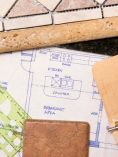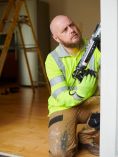Actual Cash Value, Market Value, Restoration Cost, Expanded Restoration Cost…What’s it All Mean?

Replacing Your Belongings
Lots of people rely on homeowners insurance or personal articles insurance to cover a myriad of scenarios—fire, robbery, tornado, etc. If your personal belongings are damaged as a result of a covered loss, your insurance may help with the cost of replacing these items. However, there are different types of coverage—actual cash value, market value, and restoration cost.
- Actual Cash Value & Market Value
Many homeowners policies cover the actual cash value or market value of personal belongings damaged in a loss. Actual cash value and market value are similar to one another, but there are some key differences in how they are determined.
- Actual cash value usually refers to the restoration cost of the damaged item less depreciation.
- Market value means the price the damaged item was worth in the market immediately before the loss occurred.
When personal belongings are damaged in a covered loss, your insurance company will consider the age and condition of the damaged item when determining its actual cash value or market value. For example, if your TV was stolen and it was two years old, your insurance company would calculate the payment to you for a 2-year-old TV of the same size, make and model, not what it would cost to buy the TV brand new. (More on that later.) Because the actual cash value or market value is usually less than the amount it takes to replace it with a brand new version, you would have to make up the difference, which is why it’s a good idea to get restoration cost coverage.
- Restoration Cost
Above we explained that actual cash value or market value of an item is typically not enough money to replace your stolen 2-year-old TV with a brand new one. That’s why it’s a good idea to get restoration cost coverage instead. Although the premium may be slightly higher, restoration cost coverage can get you much closer to a brand new TV of the same size, make and model as the one that was stolen or damaged.
It’s always a good idea to keep an inventory of your high-value personal belongings, and receipts for those items as well.
Rebuilding Your Home
When your home has been damaged due to storms, a fire or another covered event, there are two types of coverage you may want to ask your agent about in case you need to rebuild—restoration cost and expanded restoration cost.
- Restoration Cost
Restoration cost is the amount of money it costs to restore the form and function of the damaged part of covered property. There are limitations and restrictions so you will have to consult your policy for details. - Expanded Restoration Cost
Expanded restoration cost (ERC) coverage is similar to replacement cost coverage for your personal belongings. ERC coverage could give you up to 125% of the dwelling limit (stated in your policy) once you have rebuilt your home in the same fashion it was before being damaged. This helps make sure today’s increasing construction and materials costs do not limit the quality of your rebuild and will help get you back to where you were prior to the damage.
Of course, it’s always a good idea to talk to your agent about these different types of coverage, and as always, when it comes to insurance coverage hindsight is 20/20, so it’s better to do it now, before you might need it.
All coverage options are subject to the provisions of the policy purchased and details of the policyholder's situation.
Share This:-
Kitchen Remodeling
 Consider This
Consider ThisCooking is more fun if you enjoy the space you’re cooking in. Is it time for a kitchen remodel? If so, here are some things to think about.
-
Home Remodeling
 What to Do
What to DoMove or remodel? Whether you’ve outgrown your home or your house is outdated, here’s how you can decide.
-
Home Repairs
 Here's How
Here's HowYou’re paying a contractor for home repairs, so you should do your homework to find one who is reliable, confident and competent.
